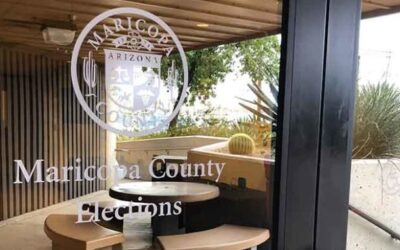By Matthew Holloway |
A new report from the Common Sense Institute (CSI) Arizona examines the state’s management of its state trust lands, set aside in 1912. It makes the case that the lands represent a “$140 Billion Missed Opportunity.” CSI Arizona argues that the beneficiaries of the trust, primarily K-12 education, could benefit from developing the land, while potentially addressing Arizona’s growing demand for developable space.
Released by the nonpartisan research organization, the full report, “Building What Was Promised: Correcting the Missed Opportunity of Arizona’s Land Grant While Addressing its Growing Need for Space,” details the history, current status, and projected impacts of the Arizona State Land Department’s (ASLD) administration of approximately 9.2 million acres of trust land.
In a release posted to X on Wednesday, the CSI wrote, “Arizona’s State Land Trust was supposed to be a generational funding engine for K–12 schools. But new research shows how much potential has been left on the table. CSI finds Arizona could have distributed up to $140 billion to K–12 students if trust land had been sold and reinvested more efficiently over the last century — compared to just $5.8 billion distributed to date.”
Arizona received about 10.96 million acres under The Arizona-New Mexico Enabling Act of 1910, with roughly 8 million acres dedicated to K-12 education—one of the largest such grants in the nation. As of 2024, the state retains approximately 84% of its original grant, compared to an average of 36% across other land-grant states. More than 80% of the remaining trust land is used for low-intensity purposes such as grazing or rights-of-way, generating an average annual return of $8.40 per acre for K-12 beneficiaries.
The report estimates that historical delays in selling and developing trust lands have cost beneficiaries approximately $134 billion in lost distributions over the past century. Had lands been sold early (1913–1923) and proceeds invested at market rates, the K-12 Permanent Land Endowment Trust Fund (PLETF) could be worth $163 billion today, compared to its current combined value (distributions plus assets) of approximately $19 billion.
The ASLD has grown the trust’s value from $811 million in 1995 to $8.7 billion today, with the PLETF reaching over $9 billion in 2024. However, only 80,000 acres statewide are under commercial lease, and since 1998, the department has sold 101,600 acres while initiating new commercial leases on just 588 acres.
The report identifies up to 3 million acres of trust land within a 10-mile radius of population centers and argues that even if a portion of this land were sold or leased strategically, Arizona could add more than 1 million new housing units over the next 20 years easing pressure on a market where prices have risen more than 40% since the pandemic.
An econometric model using REMI TaxPI+ projects that an orderly sale of remaining trust lands over the next decade could generate $18.5 billion in direct revenue, $55 billion in new economic activity, and an additional $65 billion in distributions to public schools over 50 years, while reducing housing prices by approximately 10% over two decades.
Arizona remains one of the most land-constrained states in the country. Roughly 83% of all land within its borders is publicly owned, in the form of federal, tribal, or state trust land, leaving comparatively little privately held land for growth.
CSI argues that this structural constraint has pushed up development costs and slowed housing construction, even as the state’s population has more than doubled over the past 30 years.
The study concluded that modernizing ASLD’s statutory framework, improving development timelines, and exploring new leasing and disposition tools could unlock long-untapped value for taxpayers, schools, and communities.
Matthew Holloway is a senior reporter for AZ Free News. Follow him on X for his latest stories, or email tips to Matthew@azfreenews.com.








